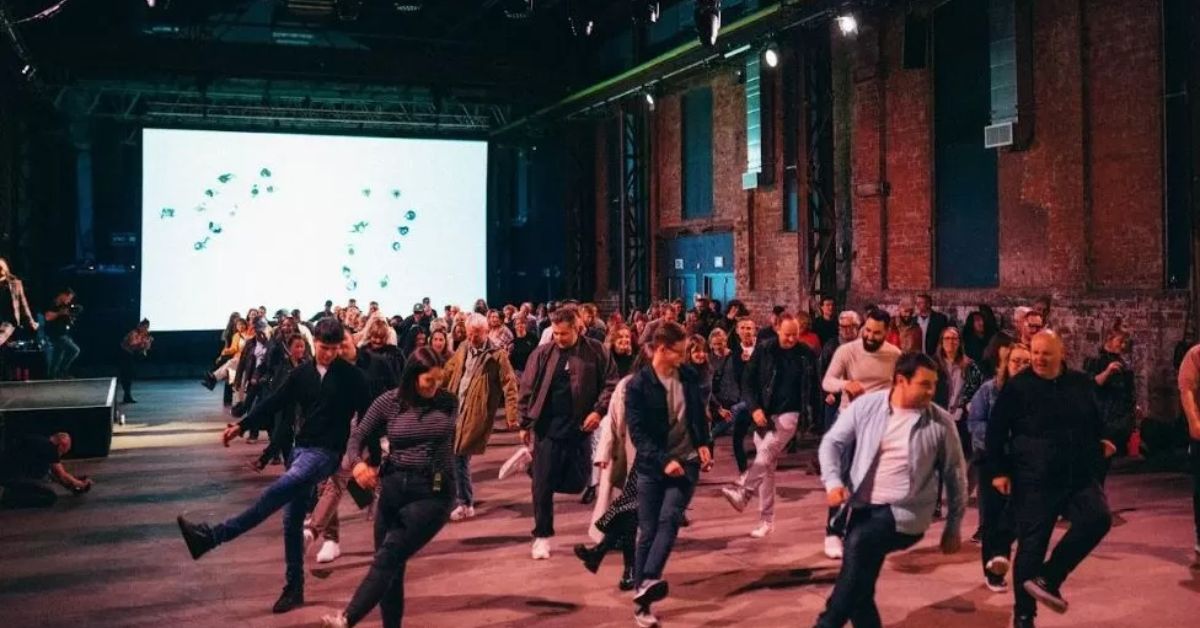The dancers’ body heat on the dancefloor at Glasgow’s SWG3 arts venue has turned clean energy. The heat from the dancers is sent through a carrier fluid to bore holes 200m (650ft) away and can be charged like a thermal battery.
Then, the energy goes back to the heat pumps, which are brought up to the right temperature and sent back into SWG3. The owners say that this will allow them to turn off the gas boilers completely, cutting the venue’s CO2 emissions by about 70 tonnes per year.
Slamming Basslines
David Townsend, who started the geothermal energy company TownRock Energy and made the Bodyheat system, told BBC News, “When you start dancing to the Rolling Stones or something at a medium pace, you might be generating 250W. “But if you have a big DJ slamming basslines and making everyone jump up and down, you could make 500-600W of thermal energy.”
Andrew Fleming-Brown, the managing director of SWG3, said that putting in the system was a “leap of faith” but that the venue was committed to “net-zero” carbon emissions by 2025. He said, “Someone has to make that first investment, but it should pay off in the long run.”
Energy Bills
The thermal heating and cooling system took three years to build and cost a little more than £600,000 to put in place.
Mr. Fleming-Brown said, “To put that in perspective if we took a more traditional route with regular air conditioning, your costs would probably be about 10% of that, or £60,000.”
But the money saved on energy bills will pay for the investment in about five years, depending on how much it costs.
Mr. Fleming-Brown told BBC News, “If we can make it work here, there’s no reason we can’t take it to other places, not just in Scotland and the UK, but also across Europe and further afield.”
Mr. Townsend already has big plans for the Berlin club SchwuZ. “They seem to be very interested,” he said. “You know they don’t want to be left behind regarding cool club tech. “They saw what we did in Glasgow and want us to do the same thing in Berlin.”
More News For You:
- Watch BTS’s Permission to Dance Performance On Stage LA On Disney+
- Acer Shows Off Its First Consumer GPU The Intel Predator Arc A770
Good Move
Dr. Jon Gluyas, chair of geo-energy, carbon capture, and storage in Durham University’s Earth sciences department, said: “Heating water takes a lot of energy, and it gives off that energy slowly. When you put that heat into the ground, it keeps the heat in for a long time. “It’s a great way to save energy. Over time, you reach a balance where you might only lose a few degrees as the heat goes away.

“Changes in energy and heat are the essential parts of this. If you can save heat, you are making the whole system work better. It has no carbon emissions and is a powerful way to reduce our overall energy needs. “If you can get it from the body heat of dancers, that’s even better.
“Keeping the heat and using it later is a big way to help solve the UK’s energy crisis and make energy more secure. “This is a brilliant thing to do.”
The Scottish government helped make Bodyheat possible, and a series of grants helped pay for most of it. Councillor Angus Millar, in charge of climate issues on the Glasgow City Council, said: “People are making Glasgow greener and having a great time through this great program.
“SWG3’s creative way of reducing energy use and emissions is a great example of how we can all help Glasgow become a net-zero city.”
Stay connected to our homepage for more such updates, Journalistpr.com

Leave a Reply